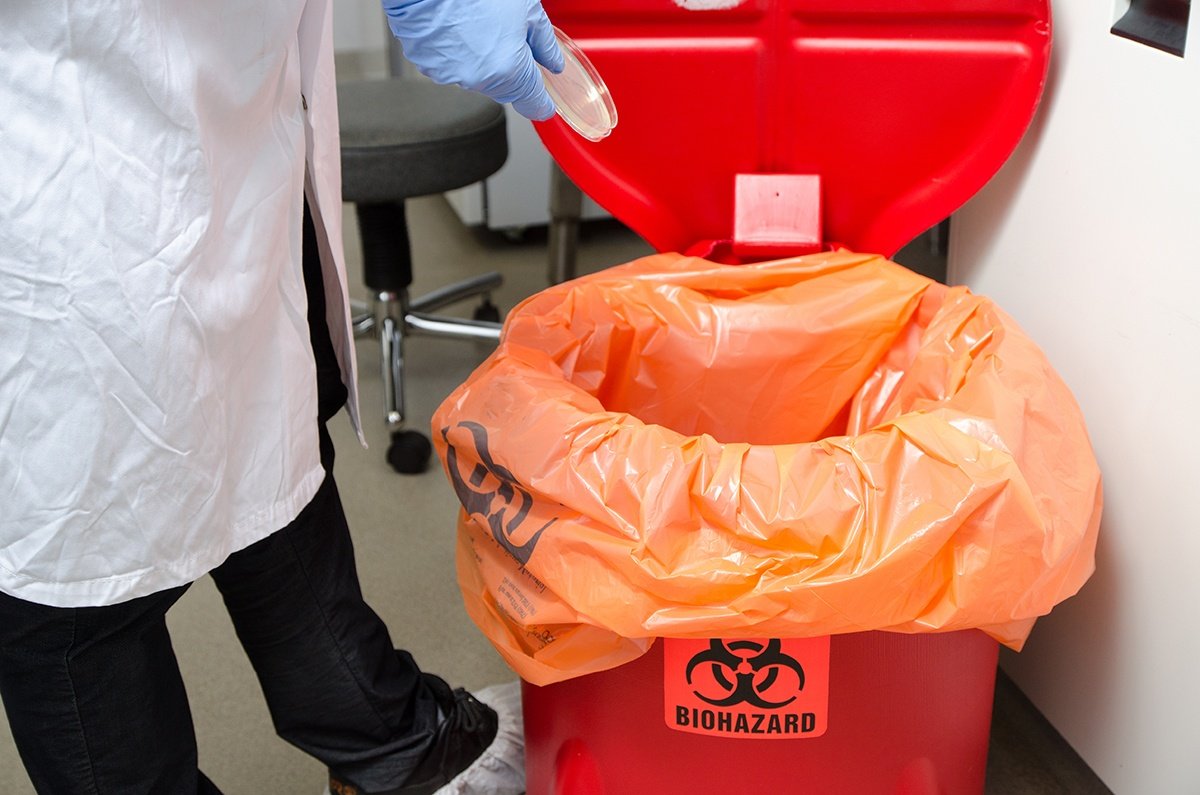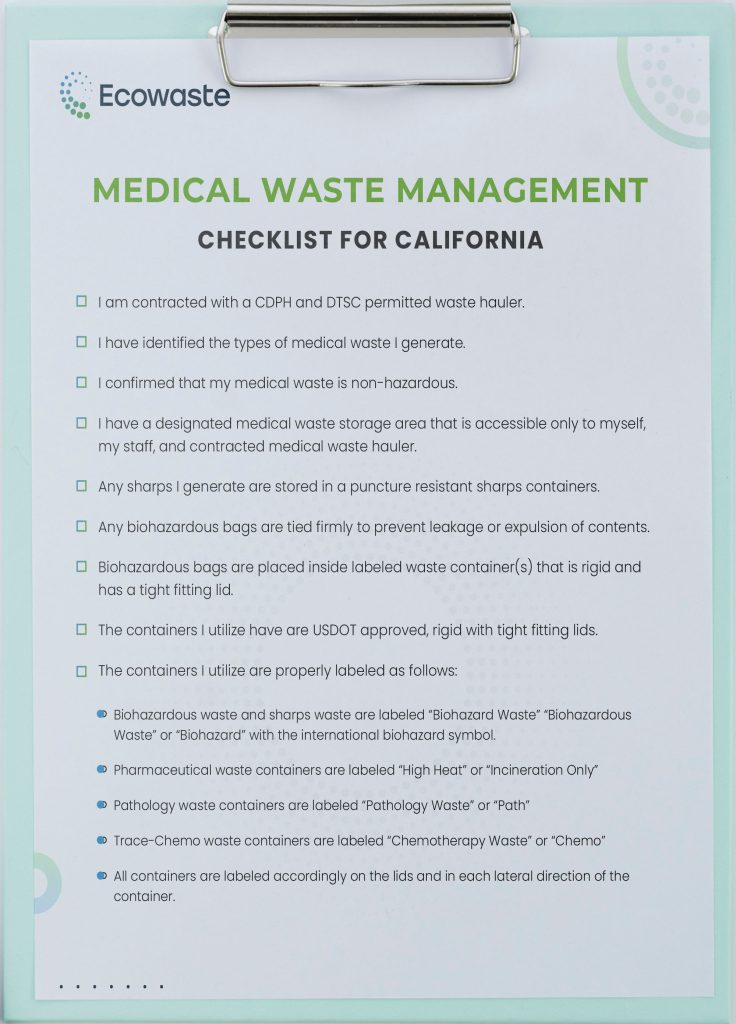
Medical Waste Regulations in California
March 25, 2024Medical waste management is a crucial aspect of healthcare facilities to ensure the safety of staff, patients, and the environment. Various types of medical waste require specific handling and disposal methods. In this section, we’ll discuss the different categories of medical waste, their definitions, and provide examples.
Biohazardous Waste
Biohazardous waste, also known as infectious waste, is any material that has the potential to cause infection in humans or animals. This type of waste typically contains pathogens, such as bacteria, viruses, or parasites, that can lead to diseases.
Examples: contaminated gloves, bandages, cultures, and swabs.
Pathological Waste
Pathological waste consists of tissues, organs, body parts, and body fluids that are removed during surgeries, autopsies, or other medical procedures. These materials need to be handled and disposed of carefully to prevent the spread of infections or diseases.
Examples: surgically removed organs, tissues, or amputated limbs.
Pharmaceutical Waste
Pharmaceutical waste refers to unused, expired, or contaminated medications and vaccines. It is essential to manage and dispose of these substances properly to prevent harm to the environment, as well as to avoid accidental ingestion or misuse.
Examples: expired medications, unused vaccines, and contaminated drug vials.
Sharps Waste
Sharps waste includes any items that have the potential to puncture or cut the skin, which can cause injury and spread infections. Proper disposal of sharps waste is crucial to protect healthcare workers and patients from needlestick injuries and potential infections.
Examples: needles, syringes, scalpels, and broken glass.
Chemotherapy Waste
Chemotherapy waste consists of materials contaminated with cytotoxic drugs used in cancer treatment. This type of waste can be hazardous to humans and the environment and requires special handling and disposal procedures.
Examples: IV bags, tubing, empty drug vials, and contaminated gloves or gowns.
Understanding and properly managing these different types of medical waste is essential to ensure the safety and well-being of everyone involved in the healthcare process. By adhering to proper medical waste disposal guidelines, healthcare facilities can minimize risks, maintain compliance with regulations, and contribute to a cleaner environment.

Free Medical Waste Compliance Checklist
Take control of safety in your organization. Download this checklist to keep your staff and patients safe.
